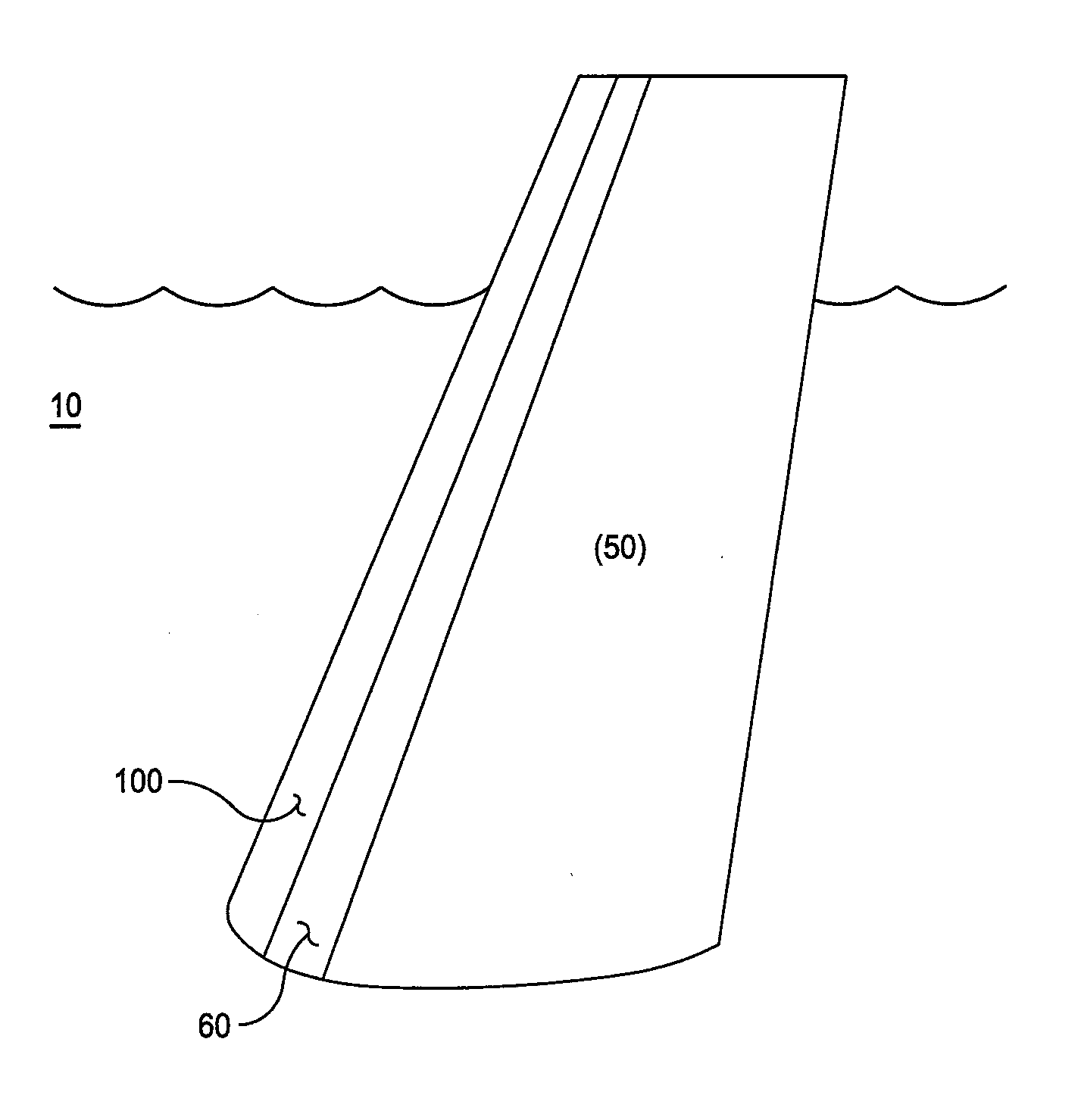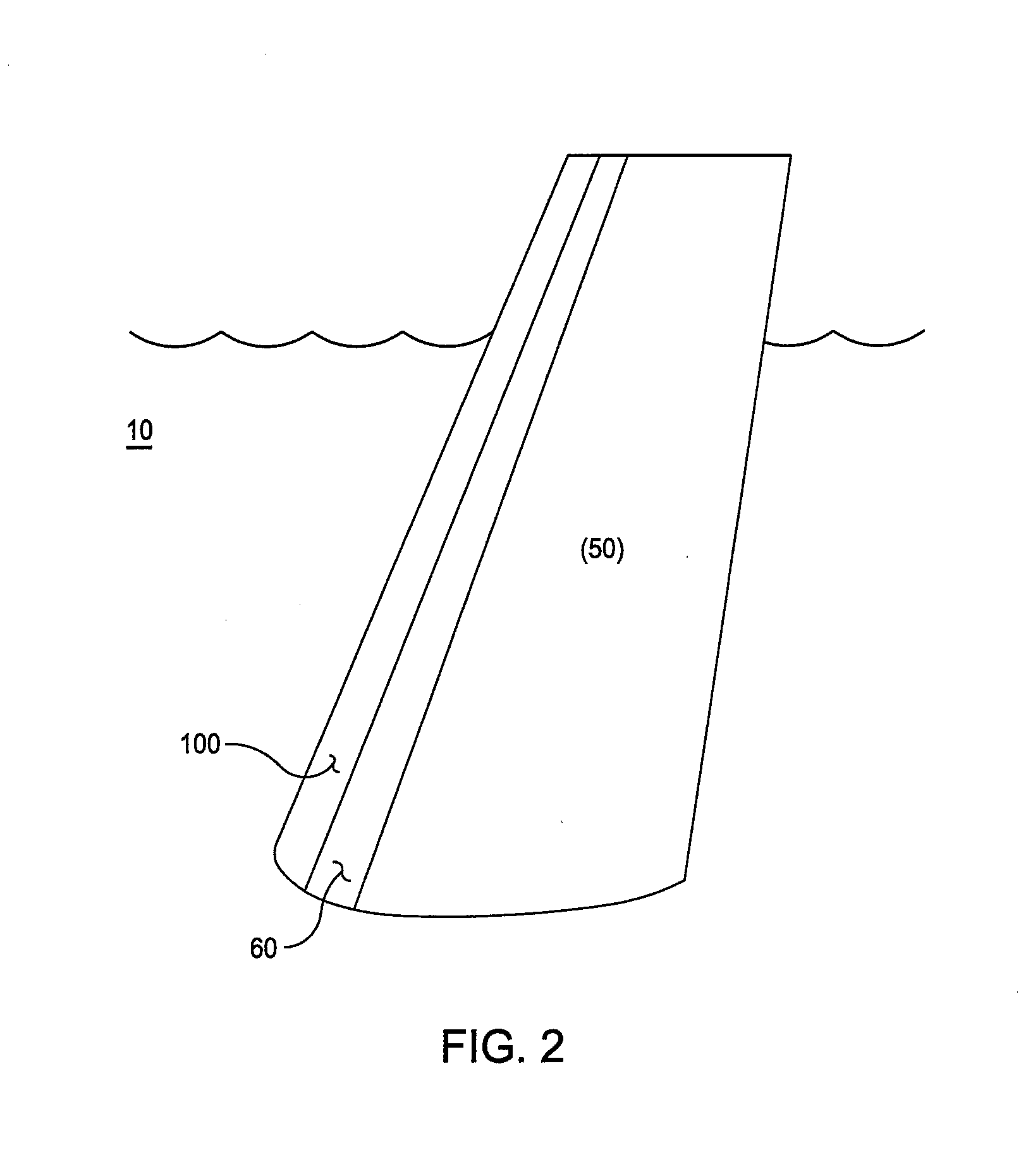Superhydrophilic coatings for improved sonobuoy performance
a sonobuoy and superhydrophilic coating technology, applied in the direction of liquid/solution decomposition chemical coating, instruments, special-purpose vessels, etc., can solve the problems of air cavity/bubbles that are detrimental to acoustic sensors, air bubbles that get trapped by irregularities on the surface, and can not operate effectively for typical sensors or airdropped devices like sonobuoys. to achieve the effect of minimizing and eliminating the air cavity and improving the performance of the son
- Summary
- Abstract
- Description
- Claims
- Application Information
AI Technical Summary
Benefits of technology
Problems solved by technology
Method used
Image
Examples
Embodiment Construction
[0023]The present invention is a system and method of use for coating the outer surface of a hydrodynamically streamlined, air-dropped acoustic sensor with a superhydrophilic compound. A variety of different processed and chemistries can be used to make superhydrophilic coatings—any one of these can be used as the coating envisioned by the present disclosure. These coatings exhibit water contact angles close to zero degrees. Some examples include: polyethylene glycol (PEG); titanium dioxide; and nanoporous silica.
[0024]Application to the surface can be by dipping or painting (PEG) or possibly even by spraying. The coated acoustic sensor 50 is shown in FIG. 2. In the figure, the acoustic sensor 50 has a superhydrophilic coating 100 applied to the rubber portion 60.
[0025]Once applied to the outer surface of the acoustic sensor, the sensor can be handled / stored / deployed under existing procedures. Titanium dioxide and nanoporous silica are inorganic materials that would have to be inter...
PUM
| Property | Measurement | Unit |
|---|---|---|
| water contact angles | aaaaa | aaaaa |
| superhydrophilic | aaaaa | aaaaa |
| superhydrophilicity water/air contact angles | aaaaa | aaaaa |
Abstract
Description
Claims
Application Information
 Login to View More
Login to View More - R&D
- Intellectual Property
- Life Sciences
- Materials
- Tech Scout
- Unparalleled Data Quality
- Higher Quality Content
- 60% Fewer Hallucinations
Browse by: Latest US Patents, China's latest patents, Technical Efficacy Thesaurus, Application Domain, Technology Topic, Popular Technical Reports.
© 2025 PatSnap. All rights reserved.Legal|Privacy policy|Modern Slavery Act Transparency Statement|Sitemap|About US| Contact US: help@patsnap.com



